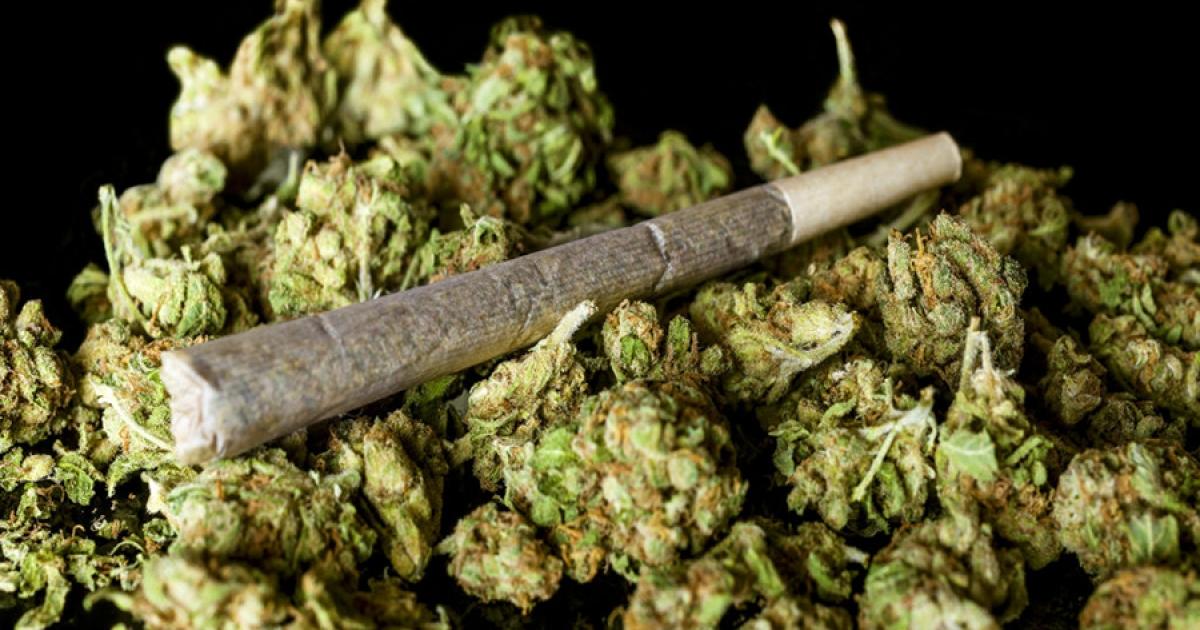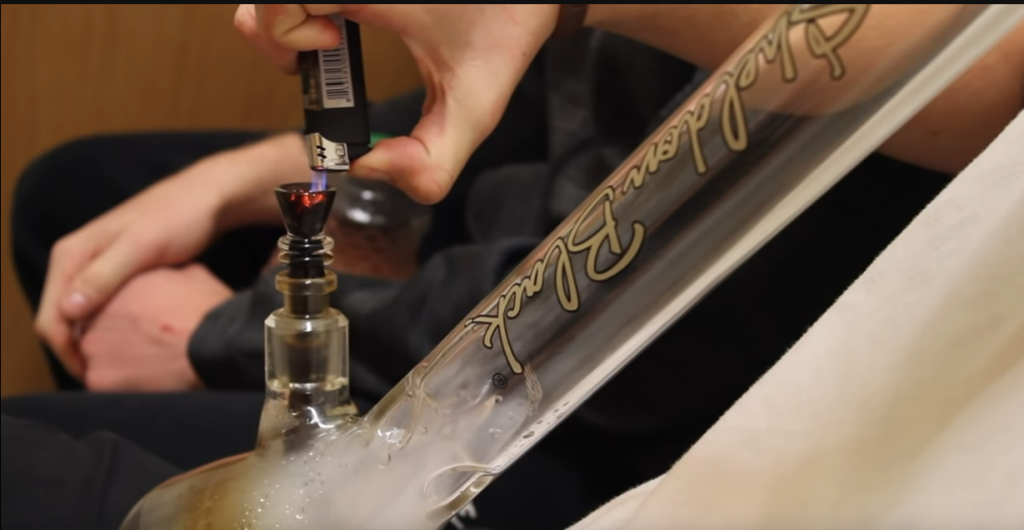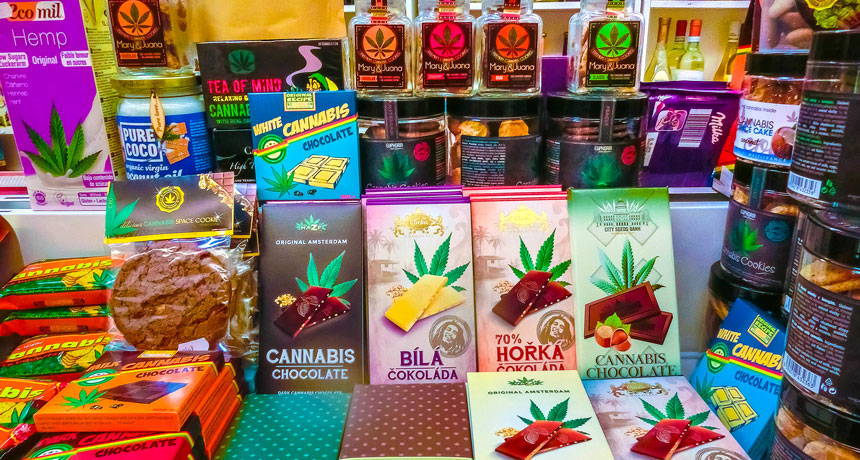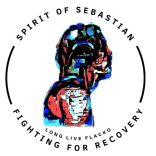MARIHUANA.
There are over 400 chemicals in marijuana and hashish. The chemical that causes intoxication or the “high” in users is called THC (short for tetrahydrocannabinol). THC creates the mind-altering effects that classifies marijuana as a “drug.’
Plants, like animals, have traits that protect them in the wild. Plants can have colors or patterns that camouflage them from predators, or they can contain poisons or toxins that, when eaten, make animals sick or alter their mental capacity, putting them at risk in the wild. THC is the protective mechanism of the marijuana plant.
Intoxication literally means “to poison by taking a toxic substance into your body.” Any substance that intoxicates causes changes in the body and the mind. It can create addiction or dependence, causing a person to want to take that drug even if it harms him or her.
You may have heard someone say that because marijuana is a plant, it’s “natural” and so it’s harmless. But it’s not. Hemlock, a poisonous plant, is also “natural,” but it can kill.
The other thing to know is that burning dried leaves and buds and inhaling the smoke into your lungs is definitely not “natural” and like smoking cigarettes, can be harmful to your body.
As for the medical uses of marijuana, it contains another chemical called CBD (short for cannabidiol). This is the substance most often associated with creating medical benefits.
Unlike THC, CBD does not cause a high. Its medical benefits are still being studied, as are methods to breed marijuana plants with high CBD and low THC for medical use.
Marijuana is a drug like alcohol, cocaine, or ecstasy. And like these other drugs, it has side effects that can be harmful.
Marijuana can be smoked as a cigarette
Joint), but may also be smoked in a dry pipe or a water pipe known as a “bong.” It can also be mixed with food and eaten or brewed as tea. These are called “edibles”. Sometimes users open up cigars and remove the tobacco, replacing it with pot called a “blunt.” Joints and blunts are sometimes laced with other, more powerful drugs, such as crack, cocaine or
PCP (phencyclidine, a powerful
hallucinogen).
When a person inhales the smoke from a joint or a pipe, he usually feels its effect within minutes. The immediate sensations increased heart rate, lessened coordination and balance, and a “dreamy,” unreal state of mind- -peak within the first 30 minutes. These short term effects usually wear off in two to three hours, but they could last longer, depending on how much the user takes, the potency of THC and the presence of other drugs added into the mix.
As the typical user inhales more smoke and holds it longer than he would with a cigarette, a joint creates a severe impact on the lungs. Aside from the discomfort that goes with sore throats and chest colds, it has been found that smoking one joint gives as much exposure to cancer-producing chemicals as smoking four to five cigarettes.
The mental consequences of marijuana use are equally severe. Marijuana smokers have poorer memories and mental aptitude than do non-users.
Recent studies on young adults that smoke marijuana, found abnormalities in the brain related to emotion, motivation and decision-making.
Plants, like animals, have traits that protect them in the wild. Plants can have colors or patterns that camouflage them from predators, or they can contain poisons or toxins that, when eaten, make animals sick or alter their mental capacity, putting them at risk in the wild. THC is the protective mechanism of the marijuana plant.
Intoxication literally means “to poison by taking a toxic substance into your body.” Any substance that intoxicates causes changes in the body and the mind. It can create addiction or dependence, causing a person to want to take that drug even if it harms him or her.
You may have heard someone say that because marijuana is a plant, it’s “natural” and so it’s harmless. But it’s not. Hemlock, a poisonous plant, is also “natural,” but it can kill.
The other thing to know is that burning dried leaves and buds and inhaling the smoke into your lungs is definitely not “natural” and like smoking cigarettes, can be harmful to your body.
As for the medical uses of marijuana, it contains another chemical called CBD (short for cannabidiol). This is the substance most often associated with creating medical benefits.
Unlike THC, CBD does not cause a high. Its medical benefits are still being studied, as are methods to breed marijuana plants with high CBD and low THC for medical use.
Marijuana is a drug like alcohol, cocaine, or ecstasy. And like these other drugs, it has side effects that can be harmful.
Marijuana can be smoked as a cigarette
Joint), but may also be smoked in a dry pipe or a water pipe known as a “bong.” It can also be mixed with food and eaten or brewed as tea. These are called “edibles”. Sometimes users open up cigars and remove the tobacco, replacing it with pot called a “blunt.” Joints and blunts are sometimes laced with other, more powerful drugs, such as crack, cocaine or
PCP (phencyclidine, a powerful
hallucinogen).
When a person inhales the smoke from a joint or a pipe, he usually feels its effect within minutes. The immediate sensations increased heart rate, lessened coordination and balance, and a “dreamy,” unreal state of mind- -peak within the first 30 minutes. These short term effects usually wear off in two to three hours, but they could last longer, depending on how much the user takes, the potency of THC and the presence of other drugs added into the mix.
As the typical user inhales more smoke and holds it longer than he would with a cigarette, a joint creates a severe impact on the lungs. Aside from the discomfort that goes with sore throats and chest colds, it has been found that smoking one joint gives as much exposure to cancer-producing chemicals as smoking four to five cigarettes.
The mental consequences of marijuana use are equally severe. Marijuana smokers have poorer memories and mental aptitude than do non-users.
Recent studies on young adults that smoke marijuana, found abnormalities in the brain related to emotion, motivation and decision-making.

DABBING
THC extracted into an oil can be evaporated into a sticky goo or wax that is smoked or, more popularly, vaporized. That goo can be further refined into a hard glass-like substance often called “shatter. This concentrated form of marijuana is heated quickly on a very hot surface, vaporized, and then inhaled through a special apparatus, sometimes called a “dab rig” or an “oil rig.” This process is called dabbing. THE EFFECTS OF DABBING:
When a person inhales a concentrated “hit” through dabbing, the physical and mental effects that happen with smoking marijuana are intensified. The THC content in dabs ranges from 60% to as high as 90%. Users have reported that this form of marijuana can create psychotic breaks, hallucinations (seeing and hearing things that are not there), and having sensations like insects crawling under the skin. Because these concentrates are very strong, there have been repeated occasions when 911 teams had to be called due to cannabis overdoses.
When a person inhales a concentrated “hit” through dabbing, the physical and mental effects that happen with smoking marijuana are intensified. The THC content in dabs ranges from 60% to as high as 90%. Users have reported that this form of marijuana can create psychotic breaks, hallucinations (seeing and hearing things that are not there), and having sensations like insects crawling under the skin. Because these concentrates are very strong, there have been repeated occasions when 911 teams had to be called due to cannabis overdoses.

MOOKING
Smoking tobacco and marijuana together in the bowl of a pipe is
known as mooking.
The chemicals of tobacco and marijuana work on the nervous system and affect both the mind and the body. Some of these effects cannot be reversed. Smoking has been known to cause end-stage lung disease requiring oxygen tubes 24 hours a day. When this occurs, a person is no longer able to carry out normal activity. Simple things like walking from the bedroom to the bathroom are nearly impossible due to severe shortness of breath.
known as mooking.
The chemicals of tobacco and marijuana work on the nervous system and affect both the mind and the body. Some of these effects cannot be reversed. Smoking has been known to cause end-stage lung disease requiring oxygen tubes 24 hours a day. When this occurs, a person is no longer able to carry out normal activity. Simple things like walking from the bedroom to the bathroom are nearly impossible due to severe shortness of breath.

EDIBLES
Marijuana or hash oil can be mixed with
food or beverages commonly called
“edibles.” Brownies, cookies, candy, sodas and tea are some of the popular forms.
When a person smokes marijuana, he feels the effects immediately. When a person eats or drinks marijuana mixed food or drinks, it may take 30 to 45 minutes to digest, so the length of time for the drug to become activated is longer. In other words, the person doesn’t feel the effects immediately. Because of this, people often eat more. When the effects finally hit, the chances of becoming extremely intoxicated and even having a psychotic episode are greatly increased.
The amount of marijuana in edibles can vary widely, and the amount of THC can be so great, people have reported extreme paranoia and anxiety bordering on psychotic behavior as a result.
food or beverages commonly called
“edibles.” Brownies, cookies, candy, sodas and tea are some of the popular forms.
When a person smokes marijuana, he feels the effects immediately. When a person eats or drinks marijuana mixed food or drinks, it may take 30 to 45 minutes to digest, so the length of time for the drug to become activated is longer. In other words, the person doesn’t feel the effects immediately. Because of this, people often eat more. When the effects finally hit, the chances of becoming extremely intoxicated and even having a psychotic episode are greatly increased.
The amount of marijuana in edibles can vary widely, and the amount of THC can be so great, people have reported extreme paranoia and anxiety bordering on psychotic behavior as a result.

